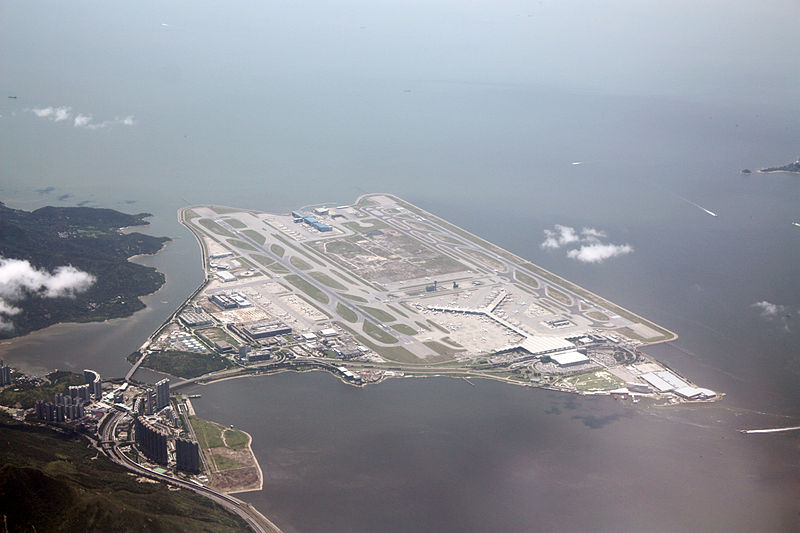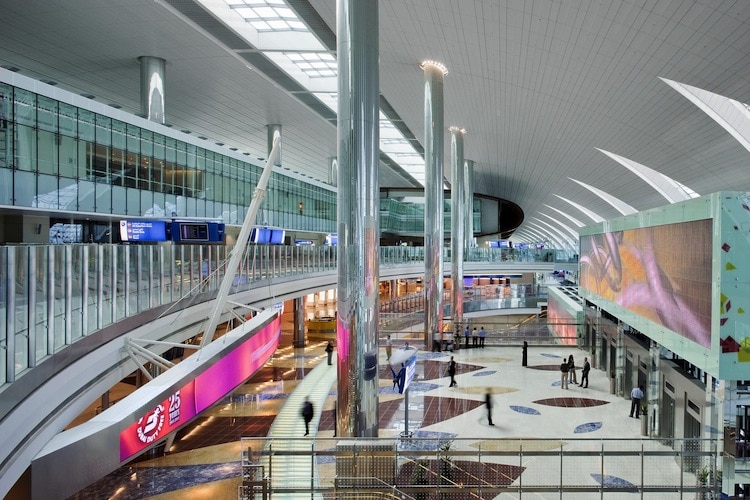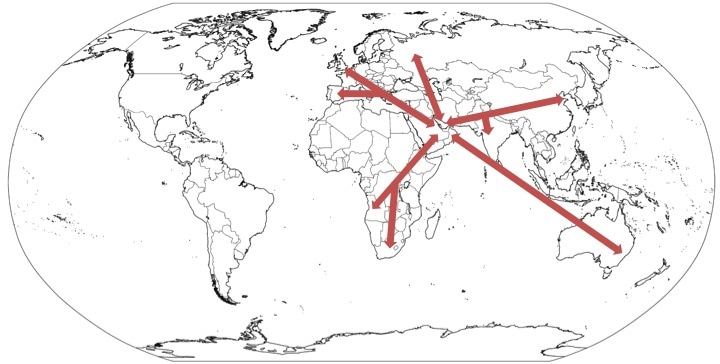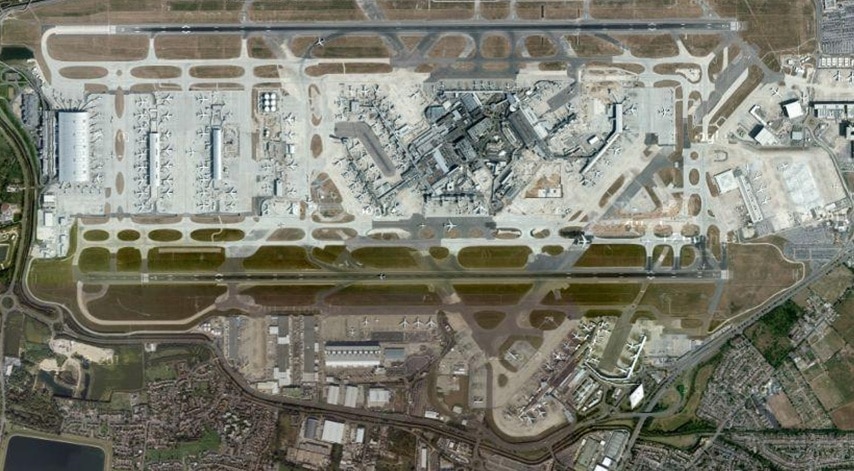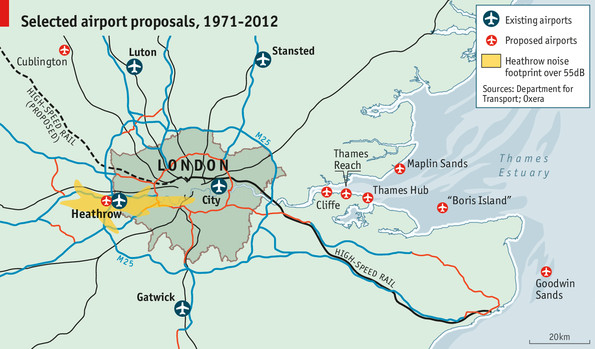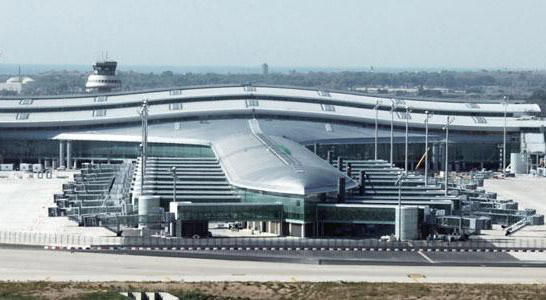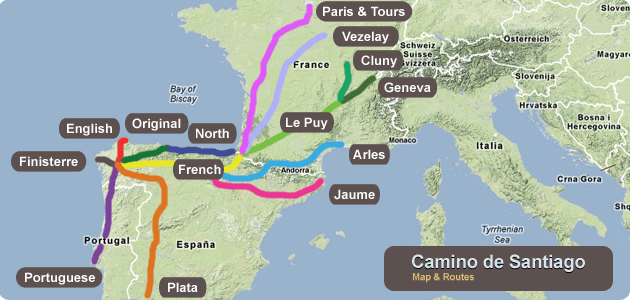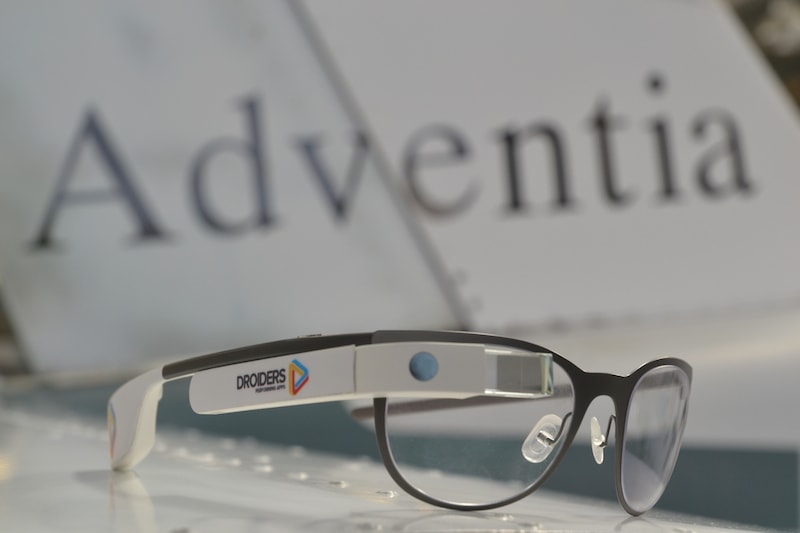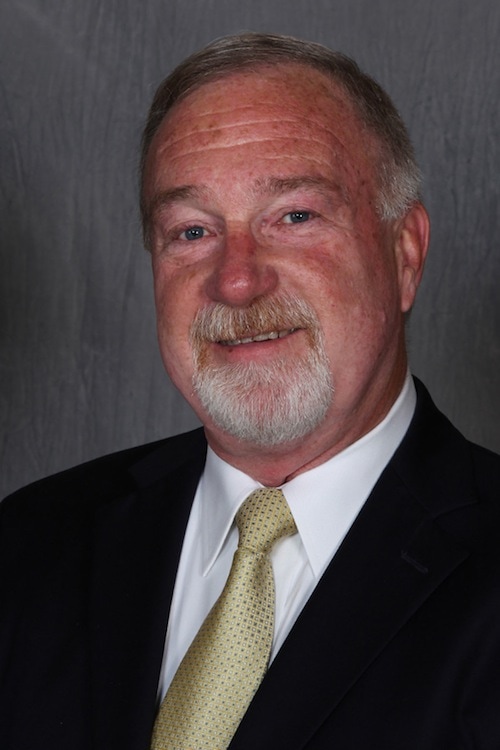Welcome to a new AirTalk, this is with Perry Rees (LinkedIn profile), he has a huge airline and aviation IT projects related experience. He had worked at British Caledonian, British Airways, EDS, SITA, Logica and now he is a freelancer, his services within the IT and Aviation Sector are focused to Airports, Airlines, Ground Handling Agents, Aviation Regulatory Authorities and IT companies providing services to such organisations.
In this interview you will find comments about Airport’s Privatization, the importance of the Middle-East’s Hub, Perry’s experience at airlines and airports environments and about Spain, its airports and a beneficent cause in the Santiago’s Way.

Perry at Plaza del Obradoiro (Obradoiro’s Square), the end of the Santiago’s Way. It is really exciting, you have to try it.
[Aeriaa] It is really impressive seeing your career trajectory in the aviation industry. First at British Caledonian, then at British Airways and since then in the IT airport and aviation services industry at, among others, EDS, SITA, Logica and now, you have your own company Peregrine Rees, tell us Perry, in which areas did you feel more fulfilled? Are there these milestones project that made the difference in your career or personally?
[Perry Rees] My most fulfilling experiences which have affected my career and personality have been the airport projects, notably the New Airport in Hong Kong at Chek Lap Kok and the new Terminal 3/Concourse 2 at Dubai International. The interaction between the construction programme and the installation, testing and commissioning of the Special Airport Systems is probably the most challenging thing I have done and also the most rewarding when you finally see everything working together.
[Aeriaa] What do/did you attract most of the aviation/airline/airport industry?
[P.Rees] I suppose it’s the scale and complexity of the implementation which is most attractive. Very few IT projects are as large as putting systems into a new airport, and very few have the degree of integration of the many (up to as many as 60) systems, all needing to exchange data. Getting these all to work together to provide a seamless experience for the traveler is very rewarding.
[Aeriaa] The airports and airlines systems have been growing and deepening in their functionality and capabilities, at 80s the systems control its business in a monolithic and vertical way, in the 90s we saw them starting to “down to the earth” with the explosion of the low cost terminals and new technological paradigms and finally in the 2000s the explosion of the Internet, the cooperation/integration between systems, the IP based networks, the computing power increased to levels exemplified in business intelligence tools and BigData, etc. So the airlines and the airports have not been apart of this, and there are new solutions everyday for monitoring more processes, control everything and trending to the passenger’s services individualization/personalization. How do you see this in your three decades of experience as in airlines as in airports?
[P.Rees] Both airlines and airports have focused on taking the cost out of their operations and generating additional revenue. For airlines this has been to find IT solutions which reduce the cost of sale of their product (e.g. on-line booking), reduce the cost of passenger handling through on-line check-in, self-service kiosks etc., and maximizing revenue by developing or using bureau services for revenue management. For airports the key ambition has been to minimise the need for terminal expansion by using IT to assist in the increase of passenger throughput by more efficient use of existing infrastructure. Here the use of resource management systems, self-service check-in and bag-tagging complement airline ambitions. Additionally the use of IT to manage car parks (up to 25% of airport revenue) and monitor Point of Sale activity of franchisees at the airport enables establishment of contracts which allow the airport to take a fraction of the revenue that the franchisee gets amongst other things such as provision of Wi-Fi services at the airport and automation of border control.
[Aeriaa] What are the best airports trending technologies do you see for the next 5 years?
[P.Rees] I would like to say CDI technologies: but as airports and airlines have different agendas and objectives I see the scope for this going much further as being very limited. Anything which enables more cost to be taken out of the operation or enables more revenue generation is likely to be adopted. The costs of the provision and maintenance of the airport infrastructure and passenger processing are constantly under review and any technology which helps reduce these is likely to be adopted. So I see things like home bag-tagging, more efficient border control systems, unmanned, or reduced manning at, boarding gates as some of the ways in which this may be achieved.
[Aeriaa] The Middle-East are building big terminals for big airlines and for a new economic environment based on the transition from the oil-economy to the tourism, the business economy and for great hubs in the way from/to Europe-Asia-Oceania. Are these great investments in Middle-East airports well dimensioned based on a strategy of new economy?
[P.Rees] Yes – the ME airport strategy is definitely based on using their petrodollars to diversify into other commercial activities such as commodity trading, financial services, as well as being a general business and transport hub on the North-South and East-West axes. Given the emerging importance of Russia, Southern Africa, India and China.

The importance of the Middle-East Hub. Emirates and Qantas A380 over Sidney, celebrating their partnership. Author: Qantas
[Aeriaa] What will be the future needs of the Middle East after this huge airport deployment and modernization?
[P.Rees] Difficult to say in IT terms, if that is what you are driving at. But It will be ongoing work for ex-pat IT workers as the indigenous people are not sufficiently numerous nor skilled, although this situation is changing to some degree.
[Aeriaa] In your opinion, how is the collaboration between the local administration and governments with foreign contractors?
[P.Rees] In my experience most airport contracts are fixed price for a “fixed” specification, and contractors try to bid as low as they can in order to win the business. It is unusual for the client to choose the most expensive bid. This means that it is always a struggle for the contractor to meet his contractual obligations while at the same time getting the profit forecast at the time of the bid. Things always go wrong in projects and if the low bid has no or little contingency built in then the contractor will try to avoid reducing his margin in various ways. This can often lead to tension and bad relations between the client and the contractor. In addition, vague wording in the contract can enable the client to change his specification during the project while denying additional payments to the contractor for additional or unnecessary work. Again, this can lead to bad relations between client and contractor. I believe that in the construction of Terminal 5 at LHR BAA adopted a more collaborative approach but I have no specific knowledge of how this operated as I was not involved.
[Aeriaa] I would like to know some anecdotes in any project or in the time in Caledonian / British Airways, etc. My grandpa worked most of his life at Aviaco and Iberia and I liked too much his stories. (you can read one of them about the origins of the electronic reservations systems at Aviaco/Iberia in my blog www.aeriaa.com/tag/reservations/ )
[P.Rees] There is no one specific story to tell but I think that in the implementation of new IT systems there is too little operational management involvement in ensuring that the business case for establishment or replacement of systems is fully achieved and many IT projects fail for this reason. This is not specific to aviation. Very often the introduction of a new system means that jobs will disappear or change in a fundamental way and it is only natural that there will be resistance from those affected. It is the responsibility of the operational management to ensure there is buy-in from those affected or if that cannot be achieved to take necessary action to ensure the project’s success.
[Aeriaa] The Public-Private Partnership, in the airport privatisation, are leading the investments in airports, South America leads the this paradigm and it has a tremendous potential, the airport national authorities act as regulators on behalf for the public and safety subjects, but I do not know if we will see in the next years an interests competition between the private sector and their public regulator. The private sector are investing a lot and needs the return of their investments, and the public regulators take care of the passenger’s rights and safety and prevents any antitrust inconvenience and abuse. Will they (and we) have a right future and it will be set a win-win scenario for every actor involved?
[P.Rees] It is interesting that in Europe and South America that the privatisation of airports is a well-defined movement whereas in the USA it is less so with many major airports still owned and operated by the local authority. There is little doubt, in my mind that the privatisation of airports has been very successful and we will continue to see more of this in certain parts of the world, but not in others.

Recently (2012) privatized Sao Paulo/Guarulhos International Airport. (GRO) Author: Andomenda at the English language Wikipedia
[Aeriaa] We are seeing an unstoppable high transition for exploiting the non-aeronautic incomes at airports, especially oriented for highest return in short periods of time, but will this be sustainable in the future, does everything in nowadays airports model is “Shops&Fly”?
[P.Rees] It´s not just shops: users of airports want all sorts of facilities and if they want them badly enough they will pay for them; car parking, hotels, restaurants, baggage services, Wi-Fi, preferential border/security clearance are some examples. Non-aeronautical revenue will continue to be important in the future especially as low-cost airlines are very happy to switch airports if they feel the aeronautical charges are too high.
[Aeriaa] In UK there were a lot of changes in the last 10 years in the airports management and their ownership, probably the former BAA, now Heathrow Airport Company, is the star on this. Also, in London they are thinking about more Heathrow expansions, a new big airport, etc. How do you see the present situation on these matters?
[P.Rees] I’m not sure about this one. There has been discussion about a new airport for London since before I got involved in aviation (over 35 years ago) and there is considerable disagreement about what is needed for the UK. Personally I would like to see a new airport in the Thames Estuary but I think it will be a long way off and London may well lose out to FRA, CDG, MAD and AMS as the major airport hub in Europe.
[Aeriaa Note: yo can find more information in this The Economist article: Flight paths for a cloudy future]
[Aeriaa] I have to say that Perry resides in Granada, Spain and he has knowledge about the Spanish airport’s context and I know he has relationships with some Aena (Spanish Airport’s Authority) managers. First of all, what did you attract of living in Spain?
[P.Rees] This one is easy. I love the Spanish climate, people and food and drink. Plus it is cheaper to live here in Spain than in the UK.
[Aeriaa] How do you see the huge investment in the last decade on the main spanish airports as Madrid-Barajas new T4 (2006), Barcelona-El Prat new T1 (2009), Málaga new T3 (2010), Alicante new Terminal (2011), etc? Do you think the Spanish airport’s network is well dimensioned?
[P.Rees] This has been a good move by Aena but I feel that more could be done to encourage low cost airlines to operate from regional airports such as GRX 😉 (Granada). Andalucía desperately needs more employment and income from tourism but the regional airports are poorly served. Almost everyone has to fly into Malaga followed by a long journey to wherever they want to go.
[Aeriaa] Now, that there is a debate about the new Spanish employment model, we speak a lot about entrepreneurship, we have a lot of healthy and reputed aviation/airport companies, mostly located on Seville, Basque Country and Madrid, but I think we have a lot of potential to be developed. What will be the most innovative and potential areas in aviation/airport industry to be interested on and what will be more accessible for an entrepreneur?
The best move for Aena would be to copy what is is happening in South and Central America. As you say there is experience in existing Spanish companies (e.g. Ferrovial taking over BAA).
[Aeriaa] About Peregrine Rees, what services do you offer? Why did you undertake your own company?
I have worked for some of the largest companies involved in aviation and IT and as I approached retirement age I wanted more free time for myself and family while at the same time being able to work from time to time.
The services I offer are: Operations (Program and project management), New business (opportunity evaluations, business cases, bid management…), Commercial/Legal (contracts), staff selection, purchasing (RFP production and evaluation), peer reviews, value engineering, quality (QTC audits, plan management) and disputes (expert witness and mediation)
[Aeriaa] You have walked the Santiago Way successfully for a beneficial purpose, the Cancer Research UK. Please Perry, tell us about this initiative and experience.
[P.Rees] My partner, who has since died, had ovarian cancer, and I undertook the walk to raise money for Cancer Research UK.
If you want to know more about Cancer Research UK, please visit, www.cancerresearchuk.org
[Aeriaa] Thanks Perry.
Disclaimer: These interviews don’t have any personal commercial benefit or have nothing to do with my professional daily work. There are only a reflection of my passion about aviation, airports and technology, as Aeriaa represents.
For more info:
The economics of airports. Royal Aeronautical Society.
Qantas and Emirates partnership. The importance of the Middle-East Hub

This work by Pedro Garcia is licensed under a Creative Commons Attribution-NonCommercial-ShareAlike 3.0 Unported License


